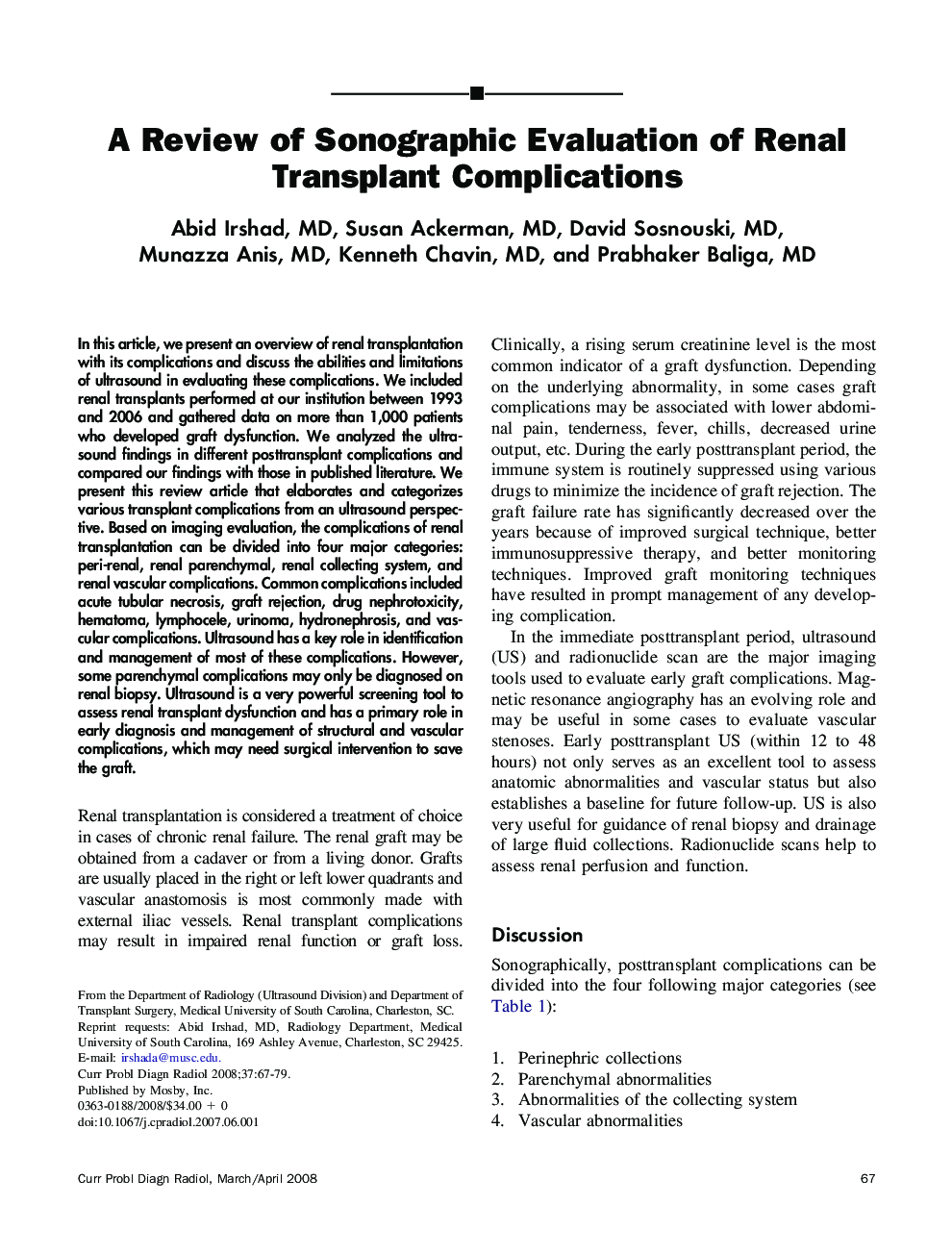| Article ID | Journal | Published Year | Pages | File Type |
|---|---|---|---|---|
| 4223884 | Current Problems in Diagnostic Radiology | 2008 | 13 Pages |
In this article, we present an overview of renal transplantation with its complications and discuss the abilities and limitations of ultrasound in evaluating these complications. We included renal transplants performed at our institution between 1993 and 2006 and gathered data on more than 1,000 patients who developed graft dysfunction. We analyzed the ultrasound findings in different posttransplant complications and compared our findings with those in published literature. We present this review article that elaborates and categorizes various transplant complications from an ultrasound perspective. Based on imaging evaluation, the complications of renal transplantation can be divided into four major categories: peri-renal, renal parenchymal, renal collecting system, and renal vascular complications. Common complications included acute tubular necrosis, graft rejection, drug nephrotoxicity, hematoma, lymphocele, urinoma, hydronephrosis, and vascular complications. Ultrasound has a key role in identification and management of most of these complications. However, some parenchymal complications may only be diagnosed on renal biopsy. Ultrasound is a very powerful screening tool to assess renal transplant dysfunction and has a primary role in early diagnosis and management of structural and vascular complications, which may need surgical intervention to save the graft.
